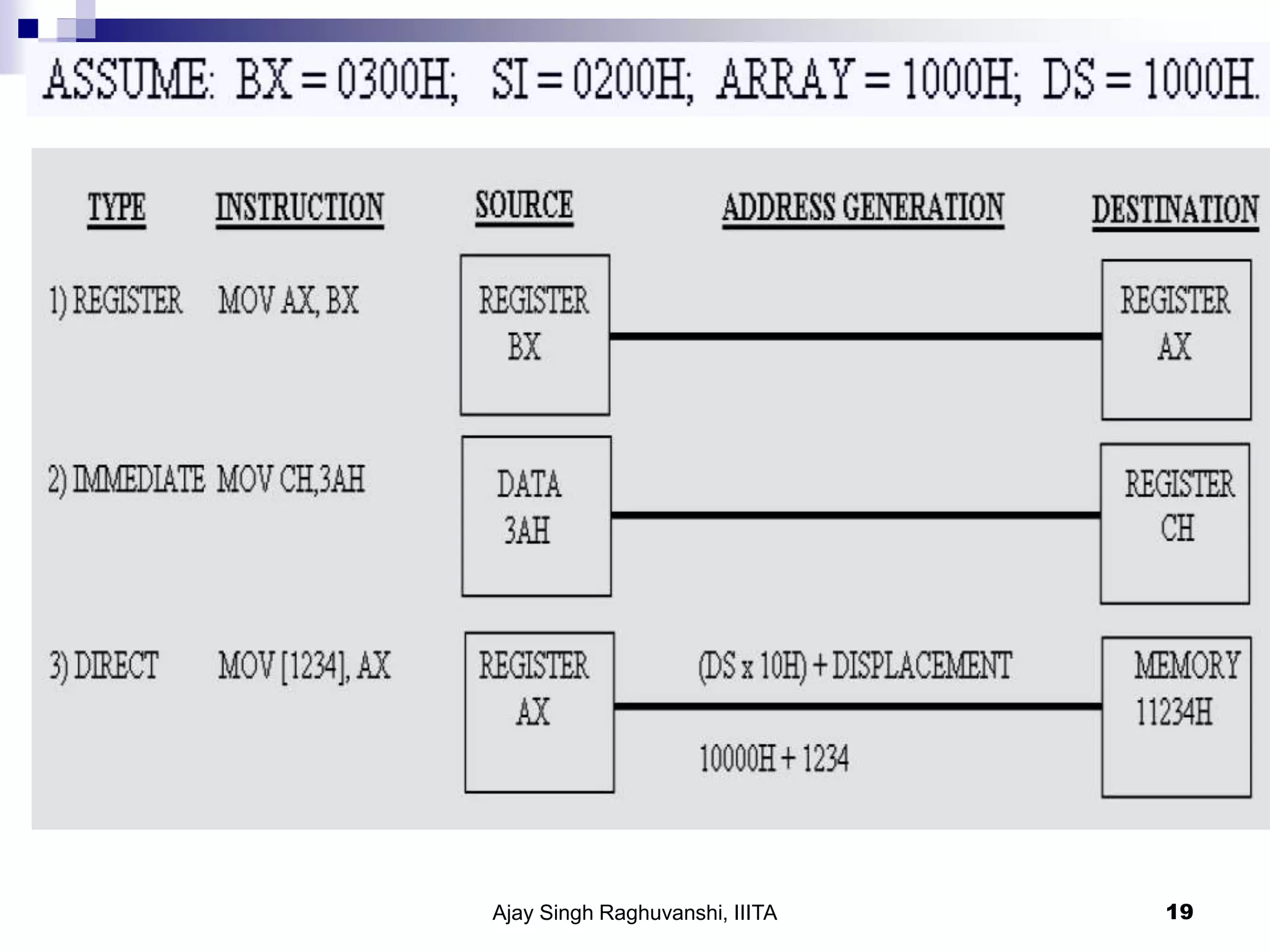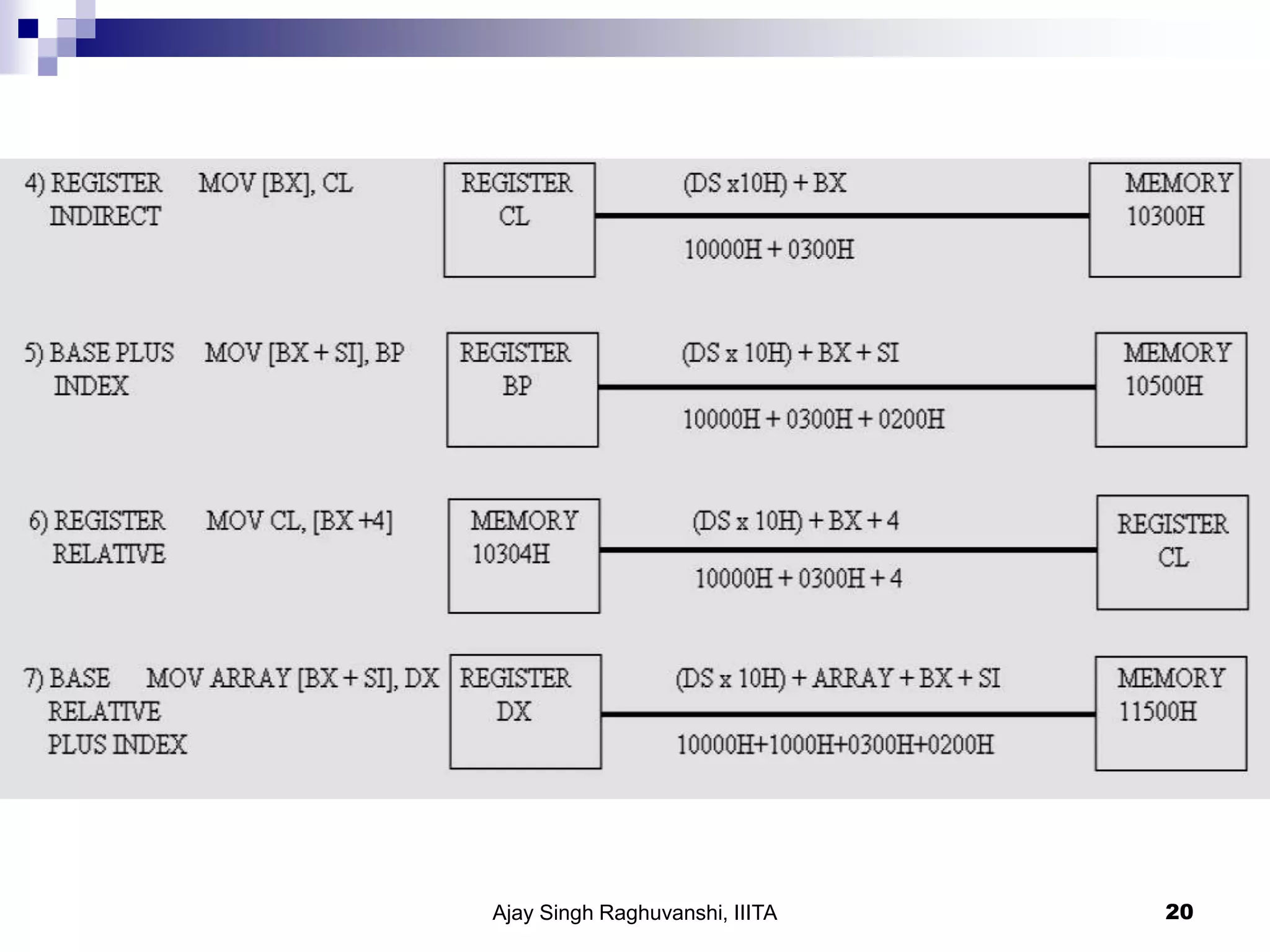The document discusses the execution unit and addressing modes of the 8086 microprocessor. It describes the various registers in the execution unit, including the flag register which contains status and control flags. It also details the different types of registers - pointer, index, and their uses. Finally, it explains the seven addressing modes of 8086 including register, immediate, direct, register indirect, based, indexed, and based indexed addressing modes along with examples.

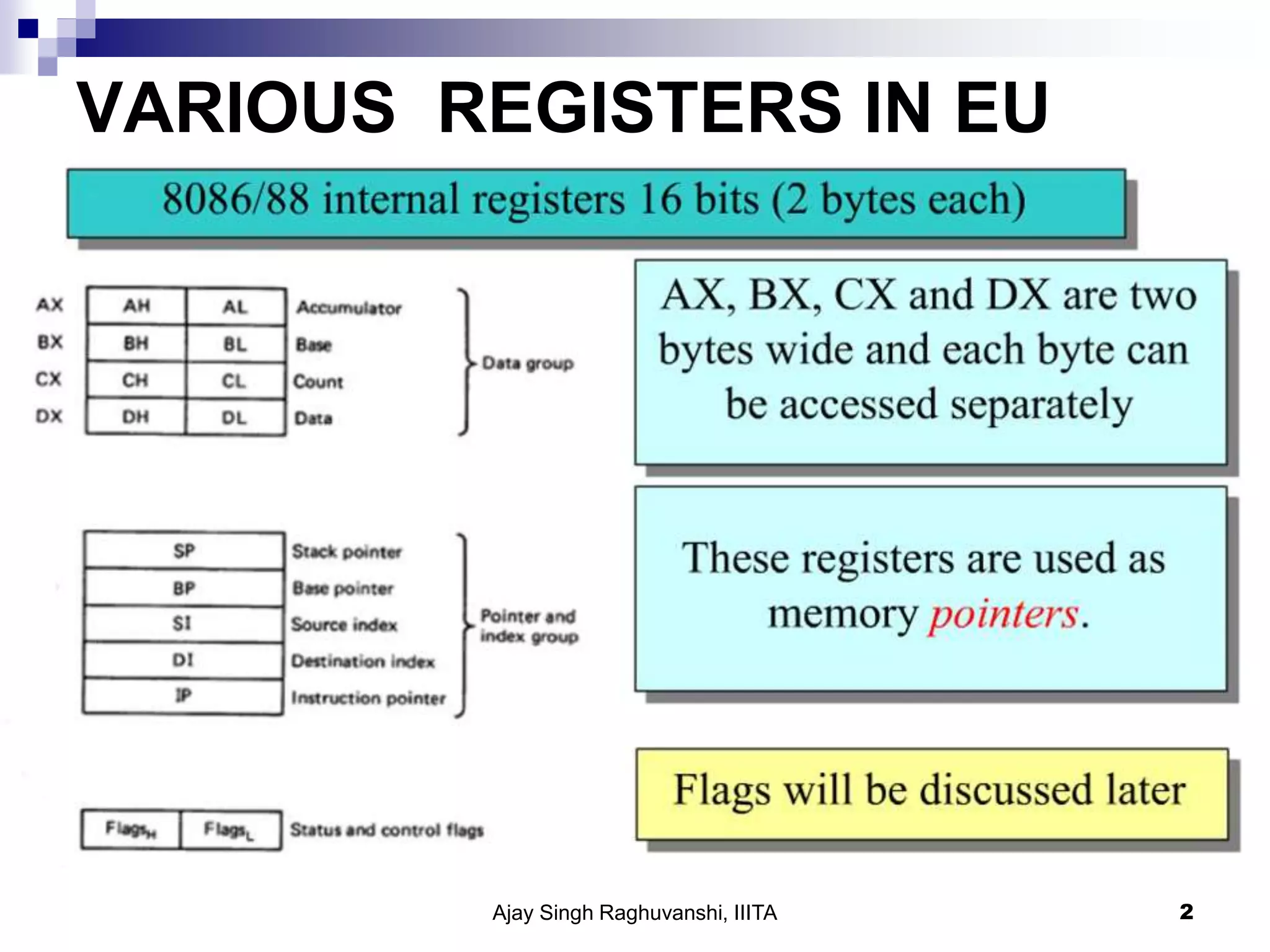

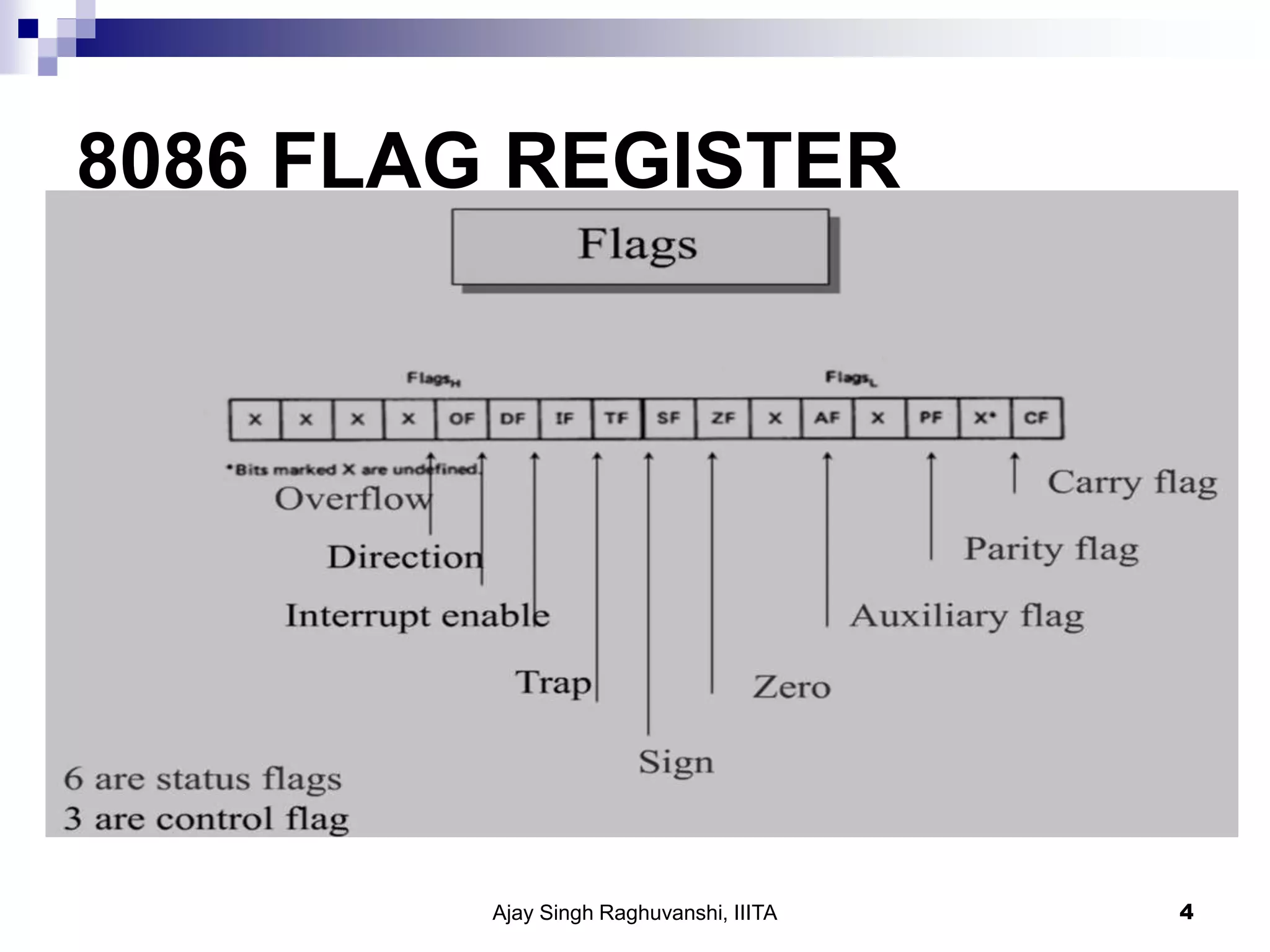
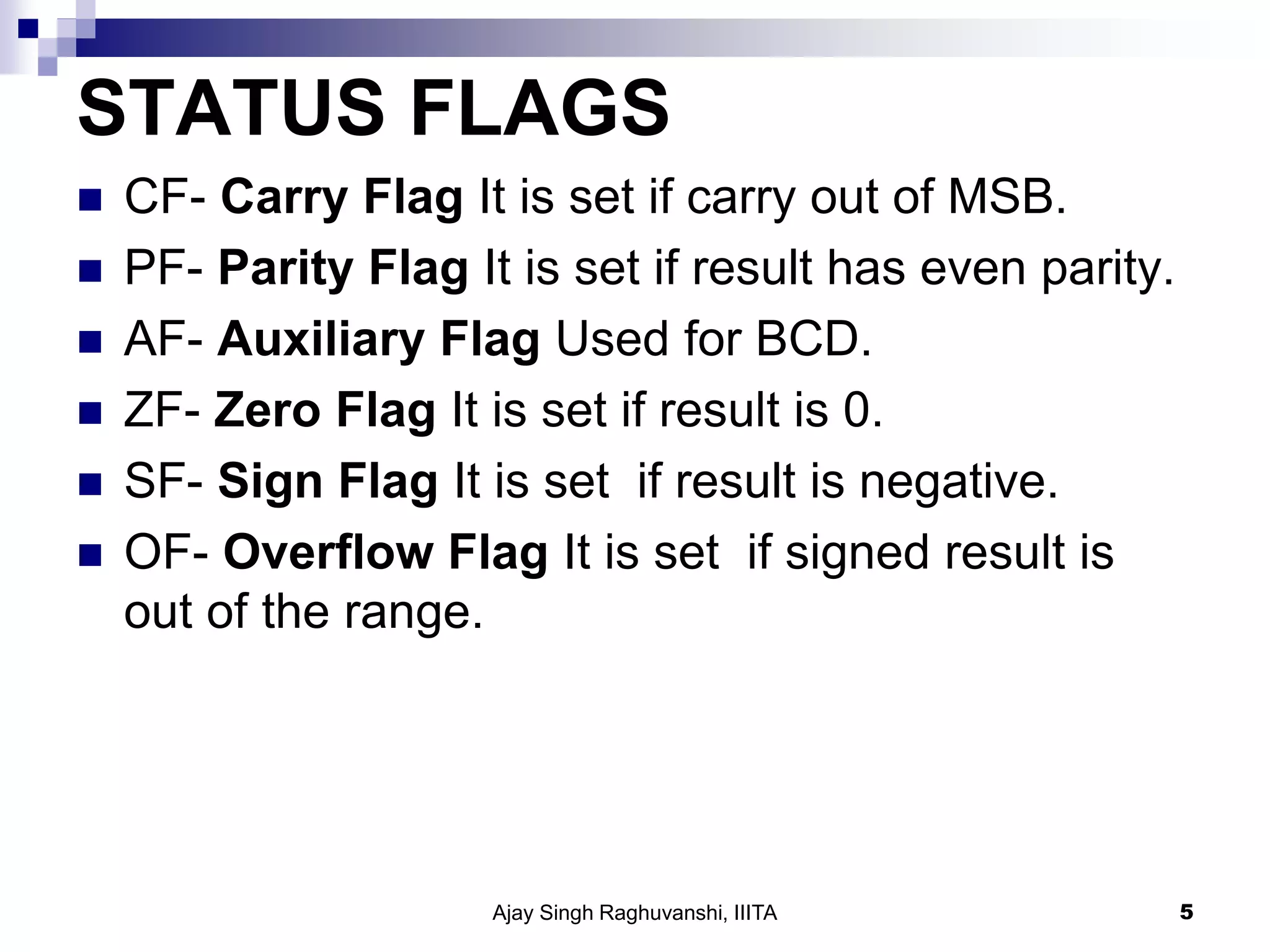
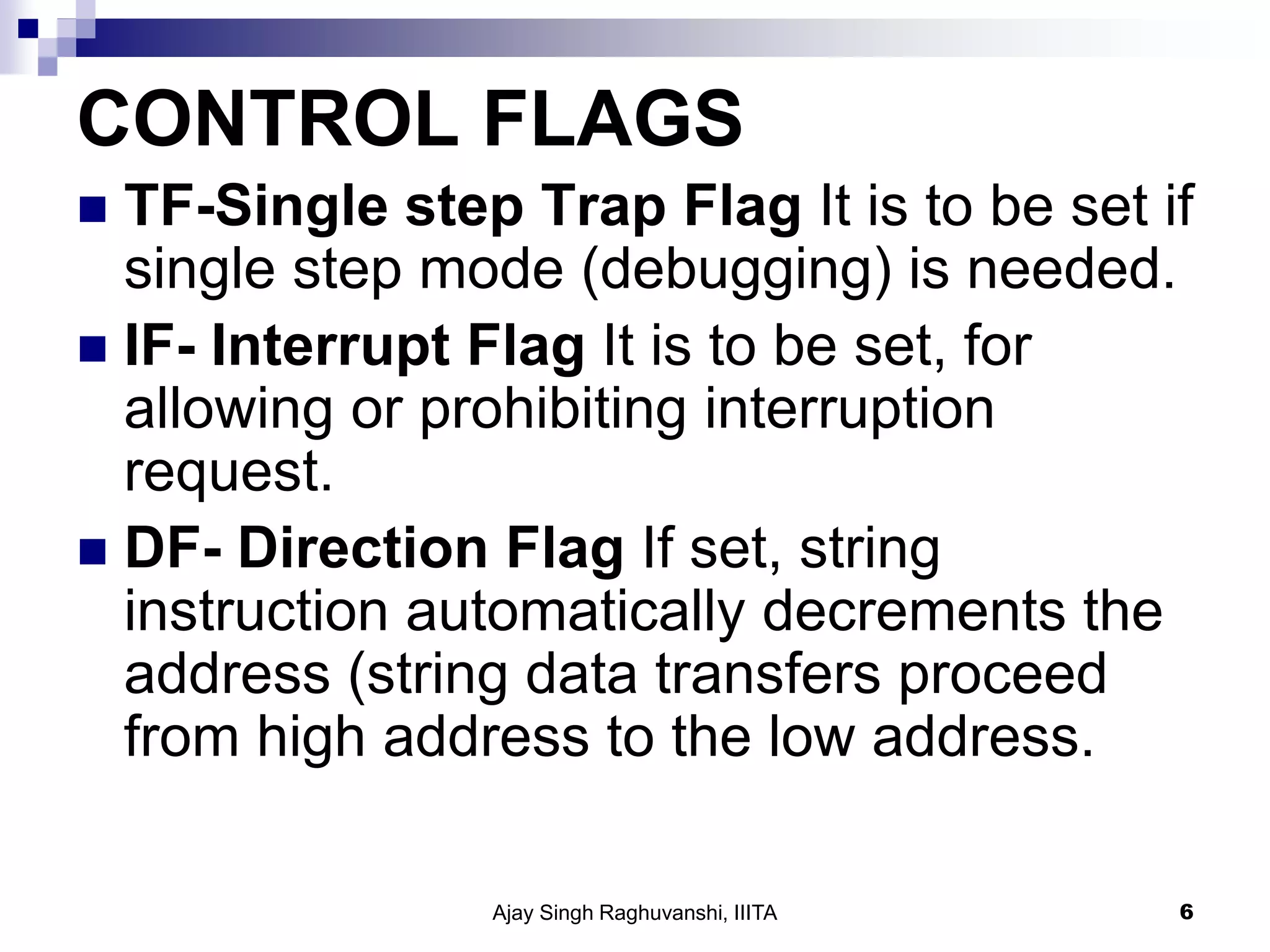
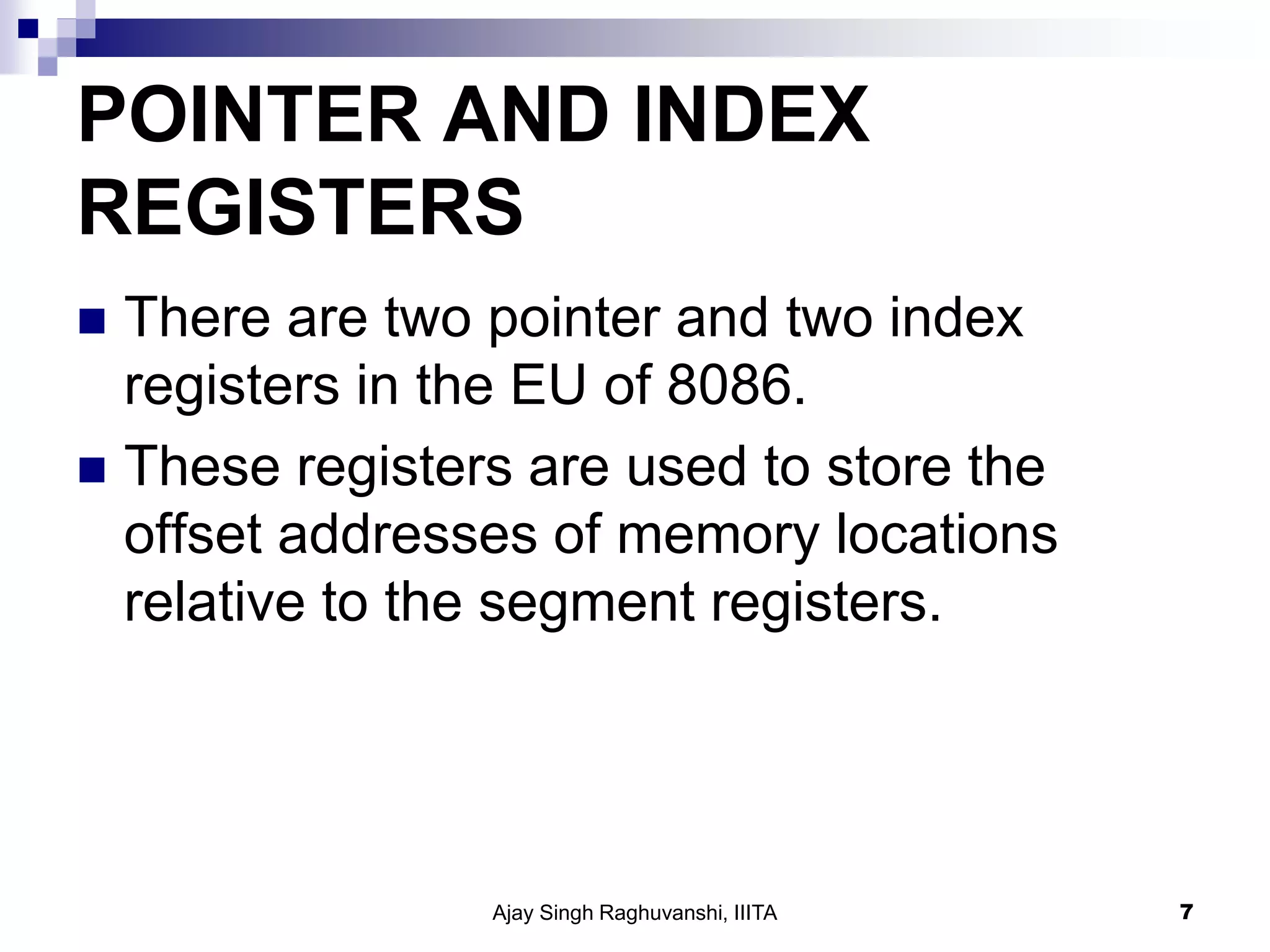
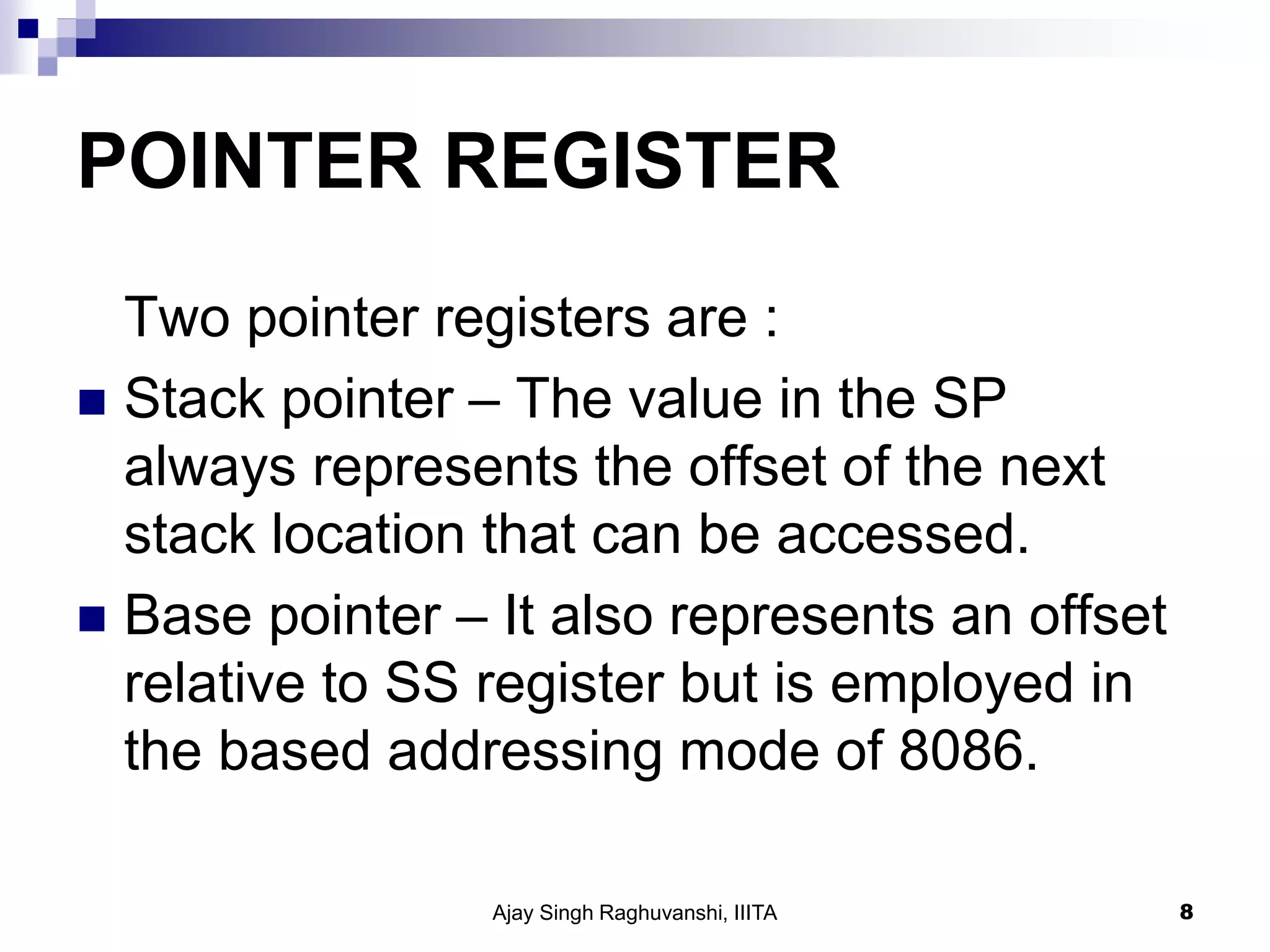
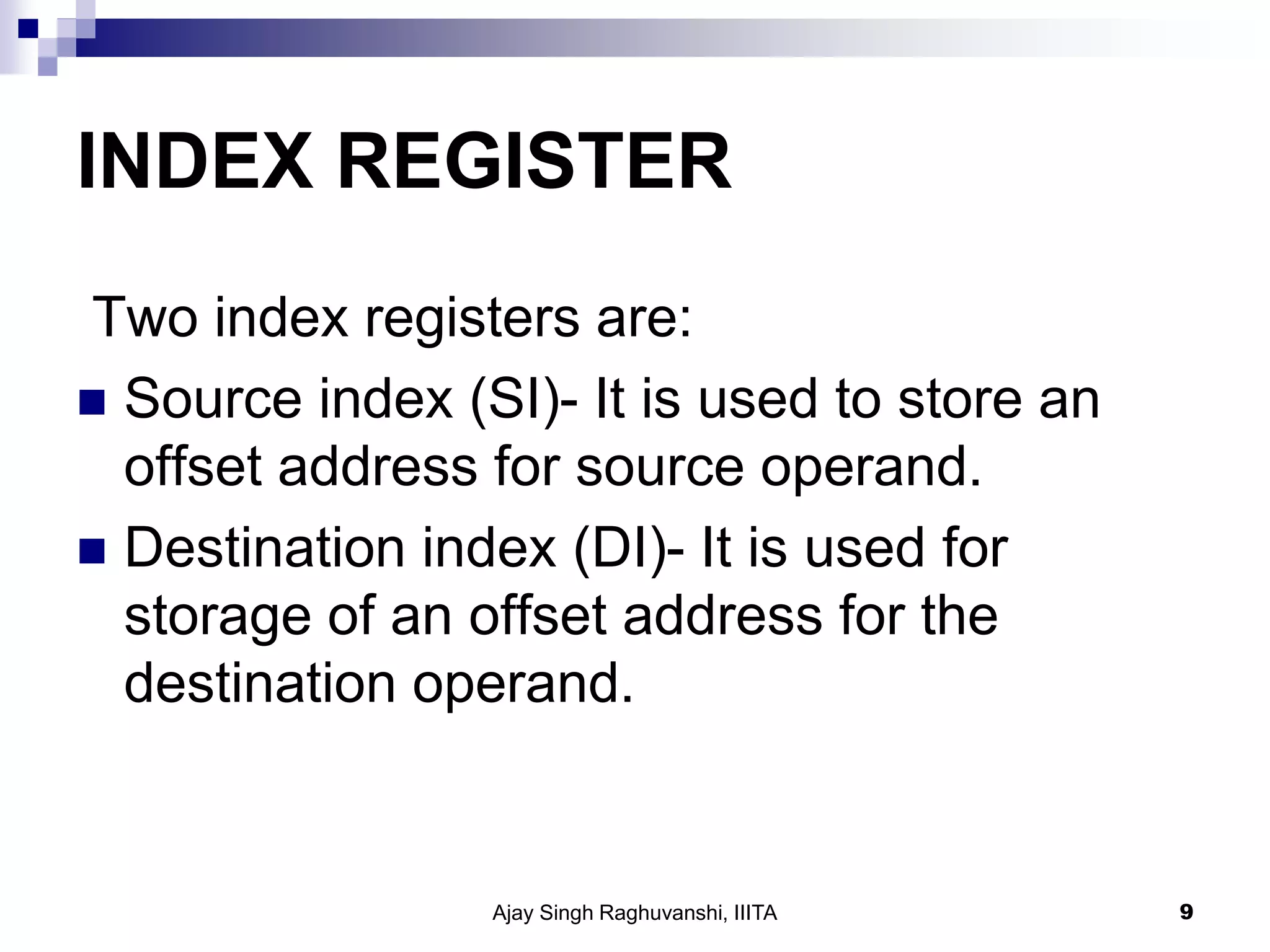
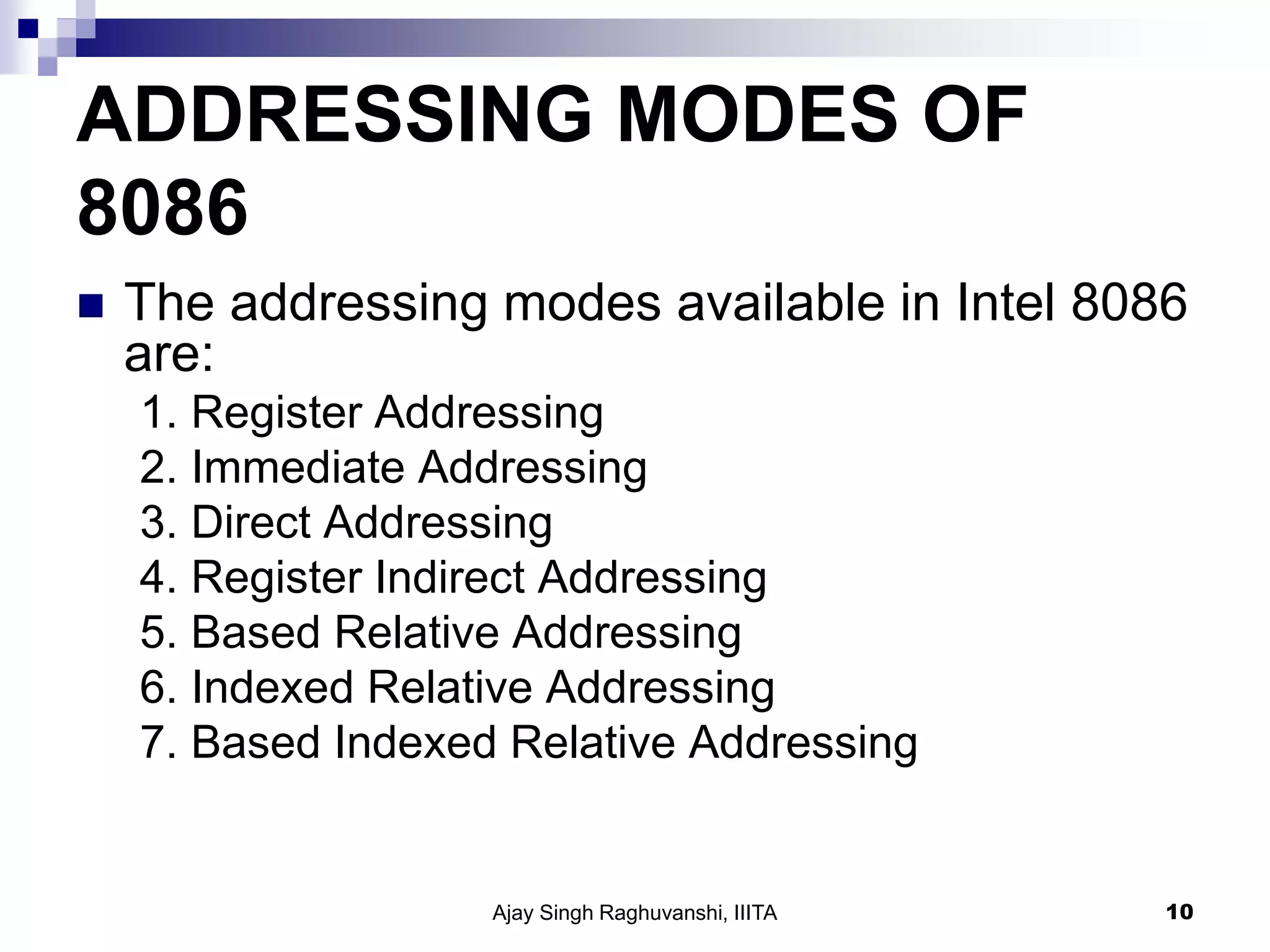
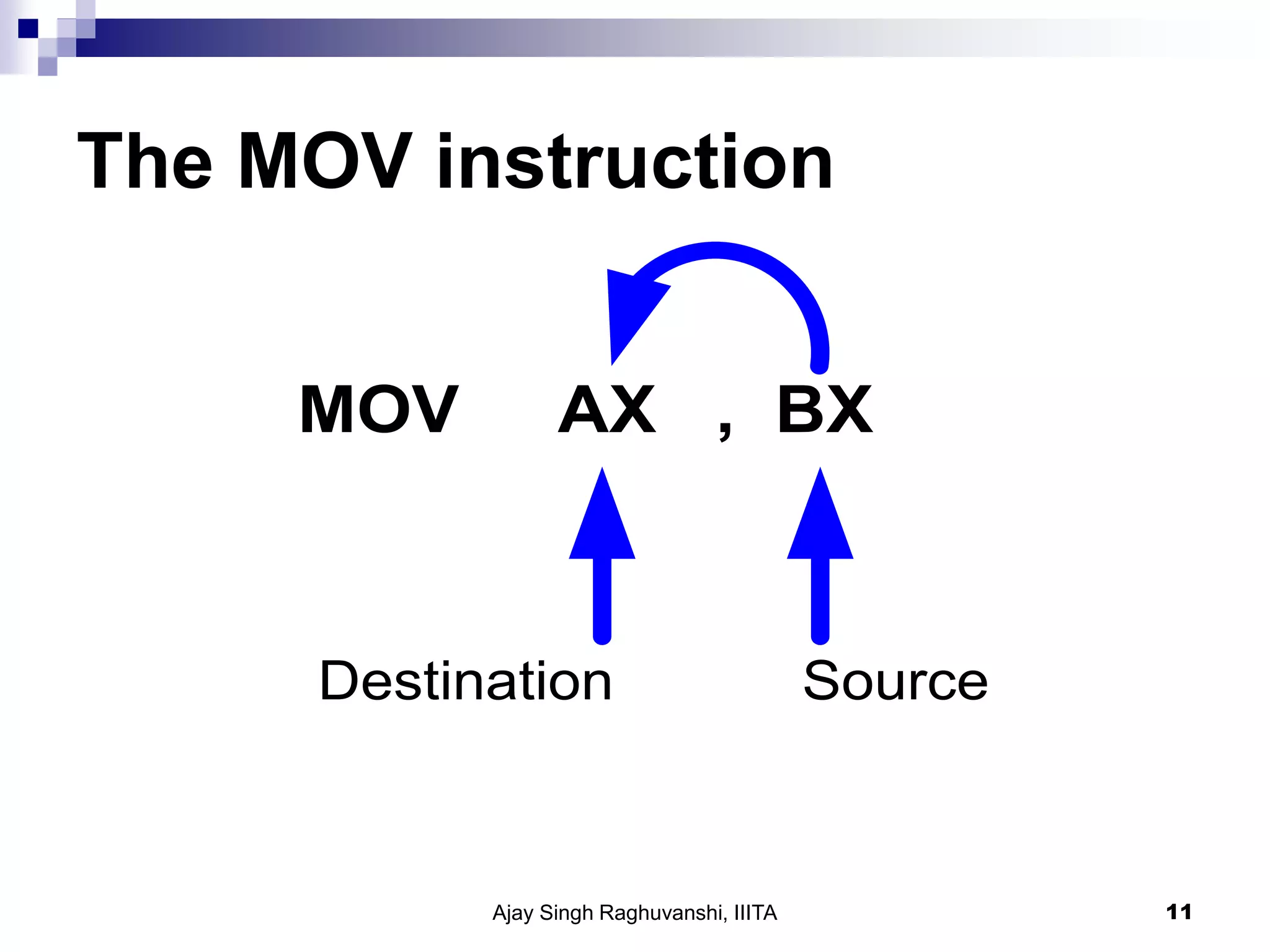
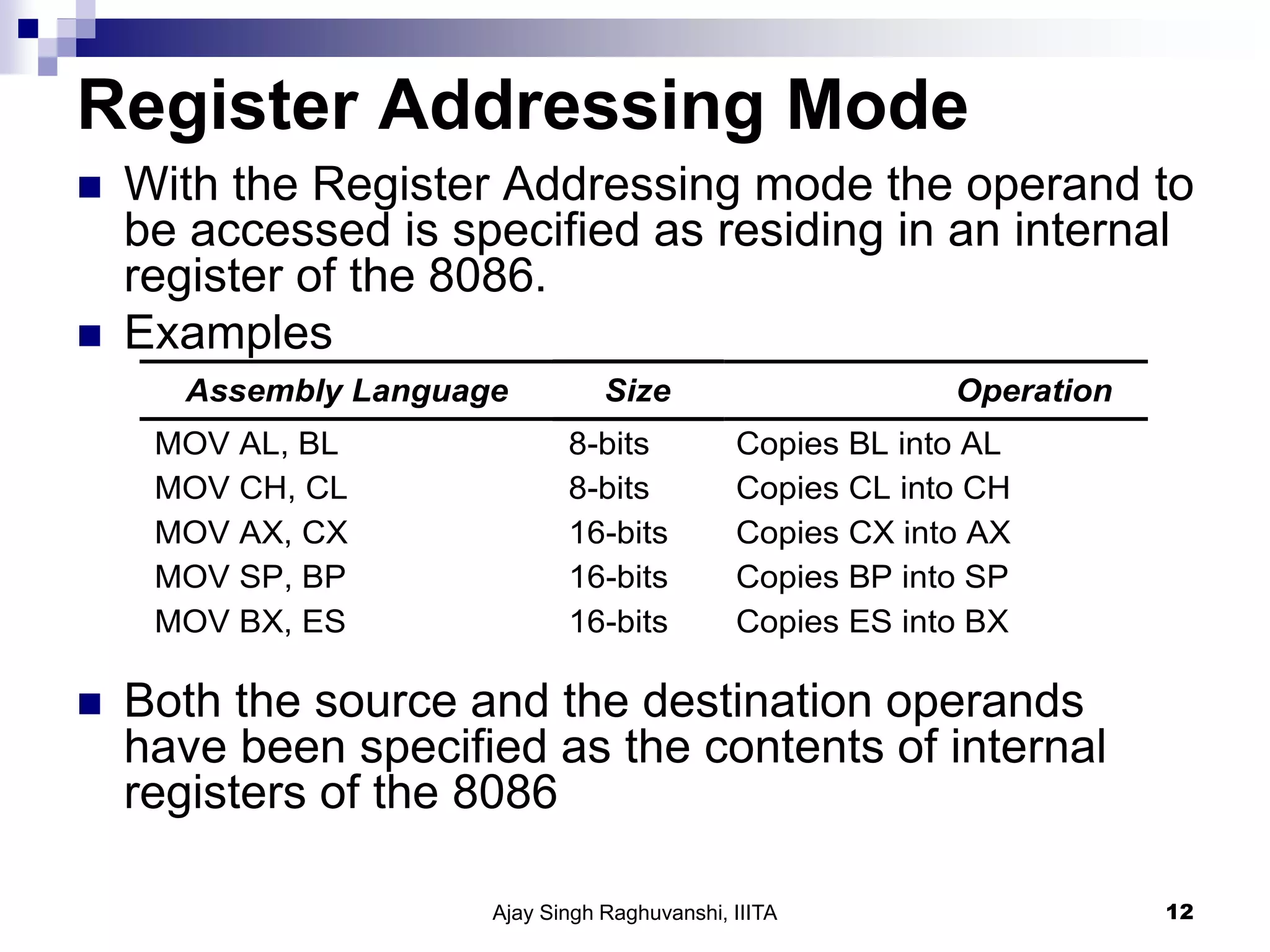

![Direct Addressing Mode
Direct addressing differs from immediate
addressing, that the locations following the
instruction op-code hold an “Offset” which is a 16-
bit offset of the storage location of the operand from
the current value in the data segment (DS) register.
offset is combined with the contents of DS in the
BIU to produce the physical address of the operand.
Example: MOV CX , [1000]
This stands for move the contents of the memory
location, which is offset by 1000H from the current
value in DS into internal register CX
CX [DS*10+1000]H
Ajay Singh Raghuvanshi, IIITA 14](https://image.slidesharecdn.com/3-140603090658-phpapp02/75/3-adressingmodes1-14-2048.jpg)
![Register Indirect Addressing Mode
Register indirect addressing is similar to direct addressing, that an
effective address is combined with the contents of DS to obtain a
physical address. However it differs in a way that the offset is
specified. Here offset resides in either a pointer register or an index
register within the 8086.The pointer register can be either a base
register BX or a base pointer register BP and the index register can
be source index register SI or the destination index register DI
Example MOV AX , [SI]
This instruction moves the contents of the memory location offset by
the value of offset in SI from the current value in DS to the AX
register.
Ajay Singh Raghuvanshi, IIITA 15
AX [DS*10+[SI]]H](https://image.slidesharecdn.com/3-140603090658-phpapp02/75/3-adressingmodes1-15-2048.jpg)
![Based Addressing Mode
In the based addressing mode, the physical address of
the operand is obtained by adding a direct or indirect
displacement of the contents of either base register BX
or base pointer register BP and the current value in DS
and SS respectively.
Example : MOV [BX + SI] , AL
This instruction uses base register BX and direct
displacement SI to derive the EA of the destination
operand. The based addressing mode is implemented by
specifying the base register in the brackets followed by a
period and direct displacement .The source operand is
located in the byte accumulator AL
Ajay Singh Raghuvanshi, IIITA 16](https://image.slidesharecdn.com/3-140603090658-phpapp02/75/3-adressingmodes1-16-2048.jpg)
![Indexed Addressing Mode
Indexed addressing mode works identically to
the based addressing but it uses the contents
of the index registers instead of BX or BP, in
the generation of the physical address.
Example MOV AL , [SI+10]
The source operand has been specified using
direct index addressing. The notation this
time is such, which is a direct displacement,
prefixes the selected index register, SI.
Ajay Singh Raghuvanshi, IIITA 17](https://image.slidesharecdn.com/3-140603090658-phpapp02/75/3-adressingmodes1-17-2048.jpg)
![Based Indexed Addressing Mode
Combining the based addressing mode and the
indexed addressing mode together results in a
new, more powerful mode known as based
indexed addressing.
Example: MOV AH , [BX] . BETA [SI]
Here the source operand is accessed using the
based indexed addressing mode. The effective
address of the source operand is obtained as
offset = [BX]+BETA+[SI]
Ajay Singh Raghuvanshi, IIITA 18](https://image.slidesharecdn.com/3-140603090658-phpapp02/75/3-adressingmodes1-18-2048.jpg)
